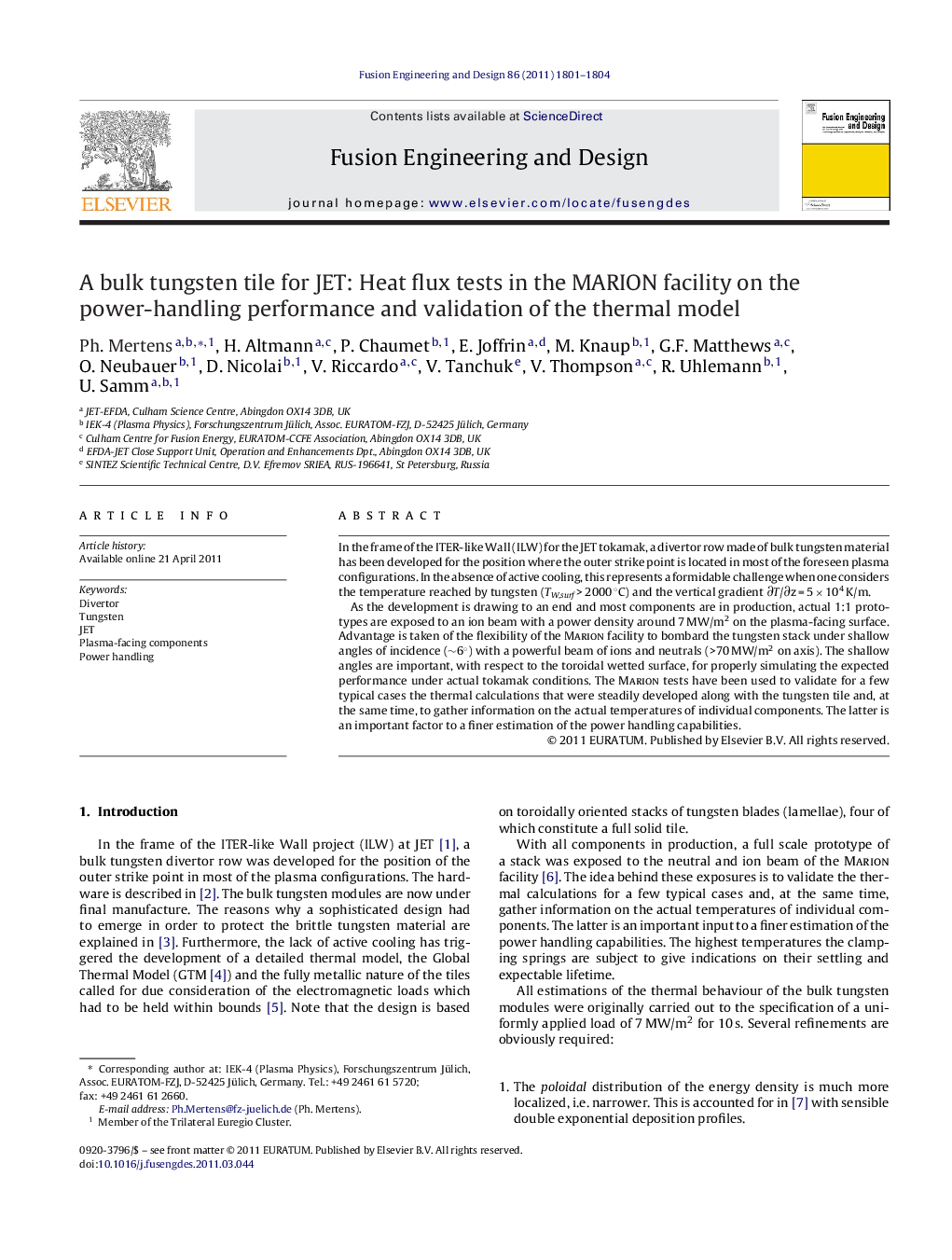| Article ID | Journal | Published Year | Pages | File Type |
|---|---|---|---|---|
| 271852 | Fusion Engineering and Design | 2011 | 4 Pages |
In the frame of the ITER-like Wall (ILW) for the JET tokamak, a divertor row made of bulk tungsten material has been developed for the position where the outer strike point is located in most of the foreseen plasma configurations. In the absence of active cooling, this represents a formidable challenge when one considers the temperature reached by tungsten (TW,surf > 2000 °C) and the vertical gradient ∂T/∂z = 5 × 104 K/m.As the development is drawing to an end and most components are in production, actual 1:1 prototypes are exposed to an ion beam with a power density around 7 MW/m2 on the plasma-facing surface. Advantage is taken of the flexibility of the Marion facility to bombard the tungsten stack under shallow angles of incidence (∼6°) with a powerful beam of ions and neutrals (>70 MW/m2 on axis). The shallow angles are important, with respect to the toroidal wetted surface, for properly simulating the expected performance under actual tokamak conditions. The Marion tests have been used to validate for a few typical cases the thermal calculations that were steadily developed along with the tungsten tile and, at the same time, to gather information on the actual temperatures of individual components. The latter is an important factor to a finer estimation of the power handling capabilities.
